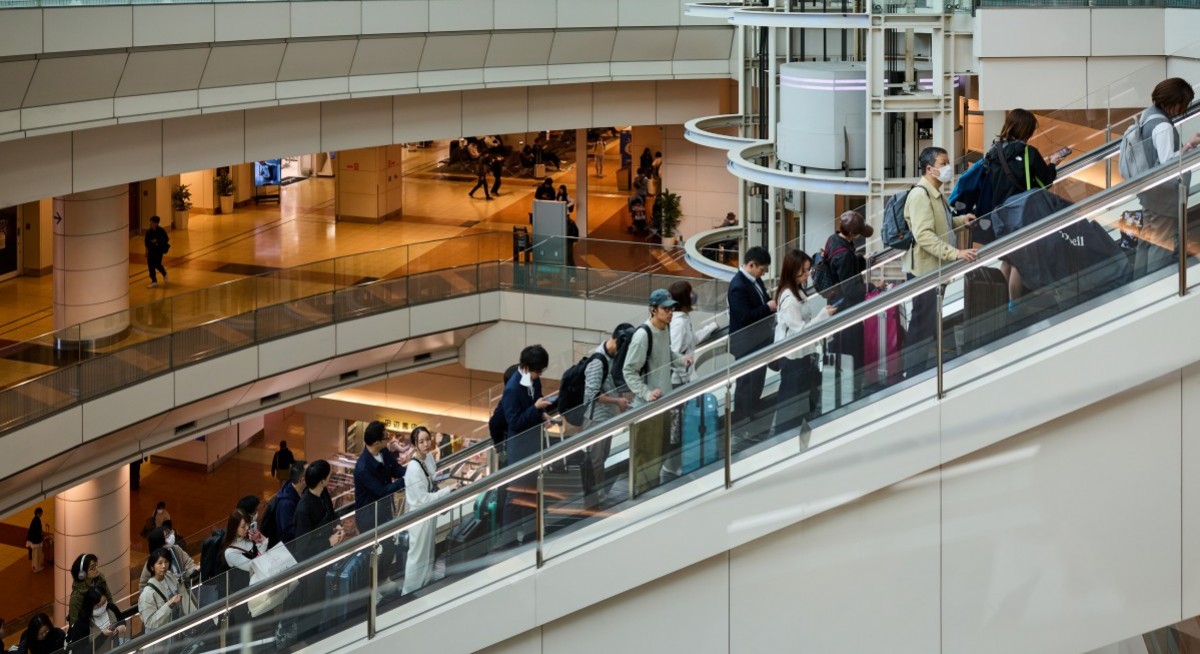Escalators move people quickly between levels. Singapore’s malls would be unmanageable without them. Changi Airport would be chaotic.
Taking the stairs can be hard work. Middle-aged people like myself can become short of breadth.
Climbing and descending stairs can be dangerous. During rush hour, the staircases at MRT stations could turn ugly.
Escalators have a close cousin — the lift. Lifts can move more people than escalators at the same time. However, they can cause congestion. People line up waiting for them.
See also: Accenture said to discuss moving Paris HQ to Bergere development — Bloomberg
There are more than 800,000 escalators in operation worldwide. The total length of these escalators is about 10,000 km. This is more than the distance from New York to Sydney. They ferry people the equivalent of several trips to the moon and back each day.
This is an impressive feat for machines that never take a holiday and never call in sick. They can double up as moving walkways for the lazy. Though they seem like modern tech, escalators have been around for a while.
In 1891, Jesse Reno, a New York entertainer, was the man behind escalators. He was bored of climbing stairs and built a “moving incline”. It was unveiled at Coney Island. The crowds were delighted by a ride that was both practical and theatrical.
See also: Delivery Hero investors said to push for sale, divestments — Bloomberg
Reno’s playful vision turned pedestrian drudgery into spectacle. This showman was the father of modern vertical mobility.
In 1896, escalators became serious business. Another inventor, Charles Seeberger, partnered with Otis Elevator Company. He coined the term “escalator”. The term blends “scala”, Latin for “steps”, with the word “elevator”.
Otis unveiled the first commercial escalator at the Paris Exposition of 1900. It won awards and global attention.
Through the early 20th century, escalators spread to department stores and subways. It made shopping and commuting more fluid. The 1920s–1930s saw the appearance of safety standards and designs. Otis dominated, but competitors like Westinghouse and Schindler advanced the technology.
After World War II, escalators became symbols of modernity, installed in airports, malls, and metros. Reno mastered the secret of making an elevator in the 19th century.
Today’s manufacturers have figured out the secret sauce of the elevator business. Elevator makers earn steady, high-margin income from long-term service contracts. Each installation leads to a service contract for about 25 years. More than half the profits are from maintenance and repairs. These activities have strong pricing power and minimal churn. They provide resilient cash flow, offsetting cyclicality in new equipment sales.
How can investors take the escalator? Three international stocks dominate the industry.
Sink your teeth into in-depth insights from our contributors, and dive into financial and economic trends
Otis Worldwide, Kone and Schindler appear undervalued relative to their strong cash generation.
Otis Worldwide is a descendant of the 19th century pioneer and is listed on the New York Stock Exchange (NYSE). It operates over 22 million units, which is four times Singapore’s population. It generates resilient free cash flow from its vast installed base. The market may be undervaluing its steady cash flow growth. At 18 times FCF, Otis is trading below its 20-year average.
Kone is listed in Finland, but much of the sales are from China. Over half of its ebit now comes from services. This is a segment that is high-margin, recurring and less cyclical. The market is still pricing Kone as a cyclical new-equipment supplier. It is at an Ev/Ebita of 16 times, which is a discount to its long-term average of 19 times.
Schindler is a legendary Swiss player that makes escalators and lifts. It blends Swiss engineering precision with a growing stream of recurring service revenue. The 55% service mix and modest 16 times Ev/Ebita hint at undervaluation.
Singapore’s elevator exposure comes indirectly. Halcyon Agri and Sri Trang Agro-Industry are rubber producers that are victims of the rubber price slump. Both supply natural rubber for escalator handrails.
President Trump was irritated by a halted escalator. However, investments in the escalator stocks may go up.
Nirgunan Tiruchelvam is head of consumer and internet at Aletheia Capital and author of Investing in the Covid Era




